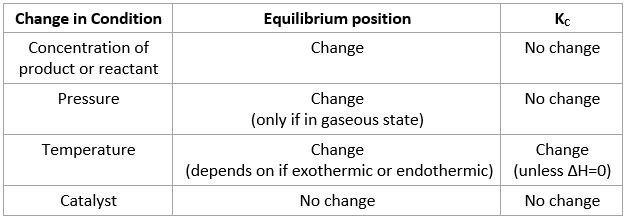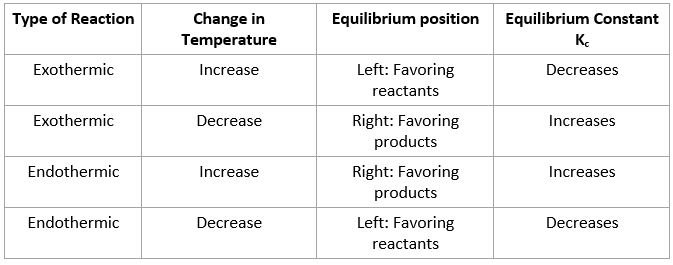Chemistry equilibrium
Equilibrium
Equilibrium Reactions in Chemistry
Many chemical reactions are reversible and exist in state of equilibrium
Dynamic Equilibrium: The forward and reverse reactions occur at equal rates
Single arrows are for non-reversible reactions
Double headed arrow are for reversible reactions which are in equilibrium
Chemical Systems
The terms “Reactants” and “Products” implies a reaction goes to completion when in reality, many reactions are in equilibrium
Relative rates of a reaction depend on:
Temperature and Pressure
Concentration of reactants and products
Presence of catalyst
At equilibrium:
Forward and reverse reactions occur at equal rates
No change in concentration of reactants or products
Equilibrium Law
Law: At a given temperature, the ratio of the concentration of products to the concentration of reactants (each raised to the power of their molar coefficients) is a constant

Constant is called equilibrium constant denoted by Kc
This constant changes at different temperatures
Large Kc value (Kc > 1) means products are favored over reactants
Small Kc value (Kc < 1) means reactants are favored over products
Pure solids and liquids are not included in when calculating the Kc value
Homogenous equilibrium: reactants and products are present in one phase. (Common one is reactions in gaseous phase)
Heterogeneous equilibrium: reactants and products exist in more than one phase
Kc of the reverse reaction is the same as 1/Kc of the forward reaction
Kc (reverse) = 1/Kc (forward)
Effect of conditions on equilibrium constant

Pressure:
If there are 4 mols of gaseous reactants and 3 mols of gaseous products, an increase in pressure would result in forward reaction being favored to reduce number of mols overall
Temperature:
In exothermic reaction, heat is a product. Increase in heat would cause equilibrium position to move left to counter the imbalance caused by heat. A summary of all possibilities is in table below

Catalyst:
Catalyst reduces activation energy
It increases rate of forward and reverse reaction by equal amount thus no change in Kc
Le Châtelier principle
Le Châtelier principle: If a change is made to a system that is in equilibrium, the balance between the forward and reverse reactions will shift to offset this change and return system to equilibrium
If concentration of reactant is increased, forward reaction will be favored to counteract this. Vice Versa
Value of Kc does not change
Reaction Quotient

If system has not reached equilibrium yet, then
Q is for reaction quotient and helps determine the progress of reaction as it moves toward equilibrium
